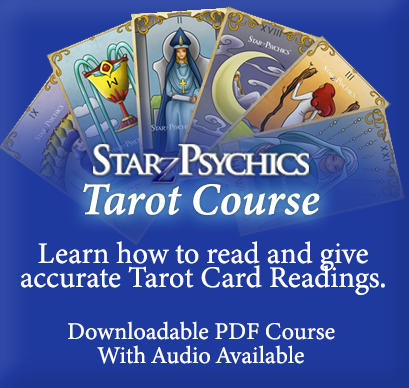- Home
- Editor's Notes
- Current Issue
- Riki Reflects
- Spiritual Traveler
- Starz Emporium
- Classifieds
- Advertise with Us
- Submissions
- Awards
- About Us
- Contact Us
Between Lives
By Andy Tomlinson and Reena Kumarasingham
.jpeg) Consciousness
I regard consciousness as fundamental. I regard matter as a derivative from consciousness. . . . Everything that we talk about, everything that we regard as existing, postulates consciousness. . . . There is no matter as such. All matter originates and exists only by virtue of a force which brings the particle of an atom to vibration and holds this most minute solar system of the atom together. We must assume behind this force is the existence of a conscious and intelligent mind. Max Planck Caught in the riptide of my near-death experience, my consciousness began to grow. It was as if a grid or cage around my consciousness had dissolved, and I was allowed to expand to my full capacity. There was no restriction, no constriction. That absolute freedom of just being me was a gift that I would never forget. I felt more connected to my soul. Years later, I became aware of what and who was restricting and constricting me, and I put a stop to them. I moved away from many of the illusions I held about life that had been conditioned into me by culture or ideology. They weren’t important anymore. Everything is a choice, and I’ve realized that no one and nothing is worth making me shrink myself or my consciousness. This was a summary of Reena’s near-death experience and opens the question of what is consciousness? On the journey to examine consciousness, we touch upon the neuroscientific and parapsychology fields of study. We then dive deep into the areas of near-death experience, past life regression, and between lives regression to investigate the similarities that Reena noticed in her own experiences. As part of this study, we have conducted new research that compares hundreds of accounts of near-death experience and between lives regression to investigate the similarities of conscious experience after death. Does consciousness survive death or was Reena’s experience a one-off happening? While some will see it as an interesting academic or philosophical debate, we noticed that Reena’s life changed drastically after her near-death experience, which had jump-started an evolution of her consciousness and ignited a new way of being. It’s led her to live with intention. Many others who have gone through such a profound episode have also experienced a powerful transformation. So it got us thinking . . . Is something as extreme as death or a near-death experience needed to evolve consciousness? We think that the answer is a resounding no! While death in all its forms fast-tracks our evolution, we can evolve and lead an intentional life right now, if we truly commit to it. The second part of this book provides guidance and exercises for expanding our consciousness to help us do just that. THE CONSCIOUSNESS DEBATE Within the materialist paradigm, scientists have been grappling with how the brain produces consciousness. Francis Crick, one of the codiscoverers of the molecular structure of DNA, proposed that a person’s mental activities are entirely due to the behavior of nerve cells, and that the atoms and molecules that make up the nerve cells produce consciousness. In a similar way, Marvin Minsky, an American computer scientist known for his work with artificial intelligence, likened humans to machines. But neither of these materialist views of consciousness can explain Reena’s near-death experience, which seems to directly challenge their validity. It seems consciousness is bigger and wider than just our neurophysiology, and perhaps our brain is merely the vessel that receives and transmits consciousness. As yet there is no definitive scientific proof in the fields of quantum physics or neuroscience of the survival of human consciousness after permanent bodily death. However, within the field of parapsychology, there has been an increasing amount of study in the areas of telepathy, mediumship, out-of-body experiences, and terminal lucidity that is providing compelling evidence that consciousness does exist outside our physical anatomical structures. SAVANT SYNDROME AND GENIUS To understand the mystifying nature of consciousness the first two areas we will look at are genius and savant syndrome. Genius describes someone who has exceptional intellectual or creative power. Often this is because the person has an unusual brain. For instance, at three years old, Wolfgang Amadeus Mozart was picking out chords on the harpsichord, and at four he was playing short pieces of music. There are also anecdotes about his precise memory of pitch and scribbling down music to a concert at the age of five.1 What could explain this impressive ability at such a young age? Is it possible that he brought the ability with him from a past life or perhaps that he tuned in to a spiritual source of information in some way? Savant syndrome takes it further. This is a rare condition of people with a developmental disorder who have an astonishing area of ability or brilliance that stands in marked contrast to their overall limitations. Kim Peek, for example, the inspiration for the character of Raymond Babbitt in the 1988 movie Rain Man, can read a book from cover to cover in around an hour, completely memorizing the content for rapid and accurate recall. So far, he has memorized over ten thousand books.2 Another example is Stephen Wiltshire, an artist with autism who can draw cityscapes in stunning detail. On one occasion in 2001 he appeared in a BBC documentary called Fragments of Genius in which he was filmed flying over London aboard a helicopter. Over the next five days, using only his memory, he drew the seven-square-mile panorama on a thirteen-foot curving canvas. He did not refer to notes, preliminary sketches, or photographs, and his drawing included the precise number of skyscraper floors.3 Perhaps people with savant syndrome, like those who are considered geniuses, can be explained away as having a special brain. But could there be other factors of consciousness involved? As we continue in this chapter it will be useful to keep an open mind so you can begin to understand what consciousness really is. LUCID DREAMING Dreams take us to a different reality, a hallucinatory world that feels as real as any waking experience. These episodes that occur during human sleep have yet to be adequately explained. One of the most interesting types is called lucid dreaming, which is when a person is aware that they are dreaming, and they have some level of control over what happens in the dream. A pioneer in this area is Karen Konkoly, who has a doctorate in brain behavior and cognition. She has led teams of independent researchers in the United States, Netherlands, Germany, and France and was able to demonstrate that two-way communication with lucid dreamers is possible. The researchers implemented the procedures for two-way communication during verified sleep in thirty-six subjects. Some had minimal prior experience with lucid dreaming, while others were frequent lucid dreamers. In these studies, the lucid dreamers were able to follow instructions to compute mathematical operations, answer yes-or-no questions, and discriminate stimuli in the visual, tactile, and auditory modalities while asleep. They responded using distinctive eye movements and selective facial muscle contractions. They also correctly answered questions on twenty-nine occasions, and this was confirmed by all four independent laboratory groups.4 One of the criticisms of this study is that it is possible that some subjects may have flickered to being partially awake to answer the questions. However, a 2009 study by Ursula Voss5 showed that lucid dreaming constitutes a state of consciousness that has measurable differences from both our waking consciousness and the rapid eye movement sleep. This study showed that lucid dreamers operate within gamma brain waves, which are of the highest frequency range (from 30–40 Hz) and quite a bit above the wide-awake alpha state of the brain (from 3–13 Hz), which is a totally different level of consciousness. This suggests that to understand consciousness we need to include other realities such as lucid dreams. TELEPATHIC COMMUNICATION We now move from studies of lucid dreaming to evidence that suggests consciousness exists outside of the body. Investigation of the special state of consciousness during sleep was taken further to see if telepathy was also possible with sleeping subjects. After several years of pilot studies Montague Ullman, a psychiatrist and parapsychologist, launched the Dream Laboratory at the Maimonides Medical Center in New York in 1962. This purpose-built laboratory enabled subjects’ brain activity to be monitored while asleep.6 Typically, a sender in a nearby room would attempt to telepathically transmit an image to the person sleeping in the dream laboratory. When instruments indicated that the sleeper was in a rapid eye movement period and assumed to be dreaming, the subject would be woken and asked to describe their dream imagery. The following day the dreamer would view a pool of art prints that included the target image and rank them according to how closely they resembled the previous night’s dream. The selections reviewed by independent judges were scored in a binary manner as either a hit (ranked in the top 50 percent) or a miss (ranked in the bottom 50 percent). An analysis of more than 450 trials conducted throughout the Maimonides research program showed the overall combined hit rate was 63 percent, where only 50 percent would be expected by chance.7 These results are highly significant, with the probability of them being coincidental about 75 million to one. The advantage of the Maimonides studies was that they could awaken subjects during rapid eye movement sleep, immediately after the telepathy test, which led to them having more information and detailed reports. Between Lives by Andy Tomlinson and Reena Kumarasingham published by Inner Traditions International and Bear & Company, © 2025. All rights reserved. https://Innertraditions.com Reprinted with permission of publisher. |
Share this article with friends!
|
Copyright © 1998 - 2025 Mystic Living Today All rights, including copyright, in the content of these Mystic Living Today web pages are owned or controlled for these purposes by Planet Starz, Inc. Terms of Service Disclaimer and Legal Information For questions or comment, contact Starzcast@mysticlivingtoday.com. Reproduction of this page in any form is not allowed without permission of the author and the owner of this site. All material on this web site, including text, photographs, graphics, code and/or software, are protected by international copyright and trademark laws. Unauthorized use is not permitted. You may not modify, copy, reproduce, republish, upload, post, transmit or distribute, in any manner, the material on this web site. Unless permissions is granted. |



